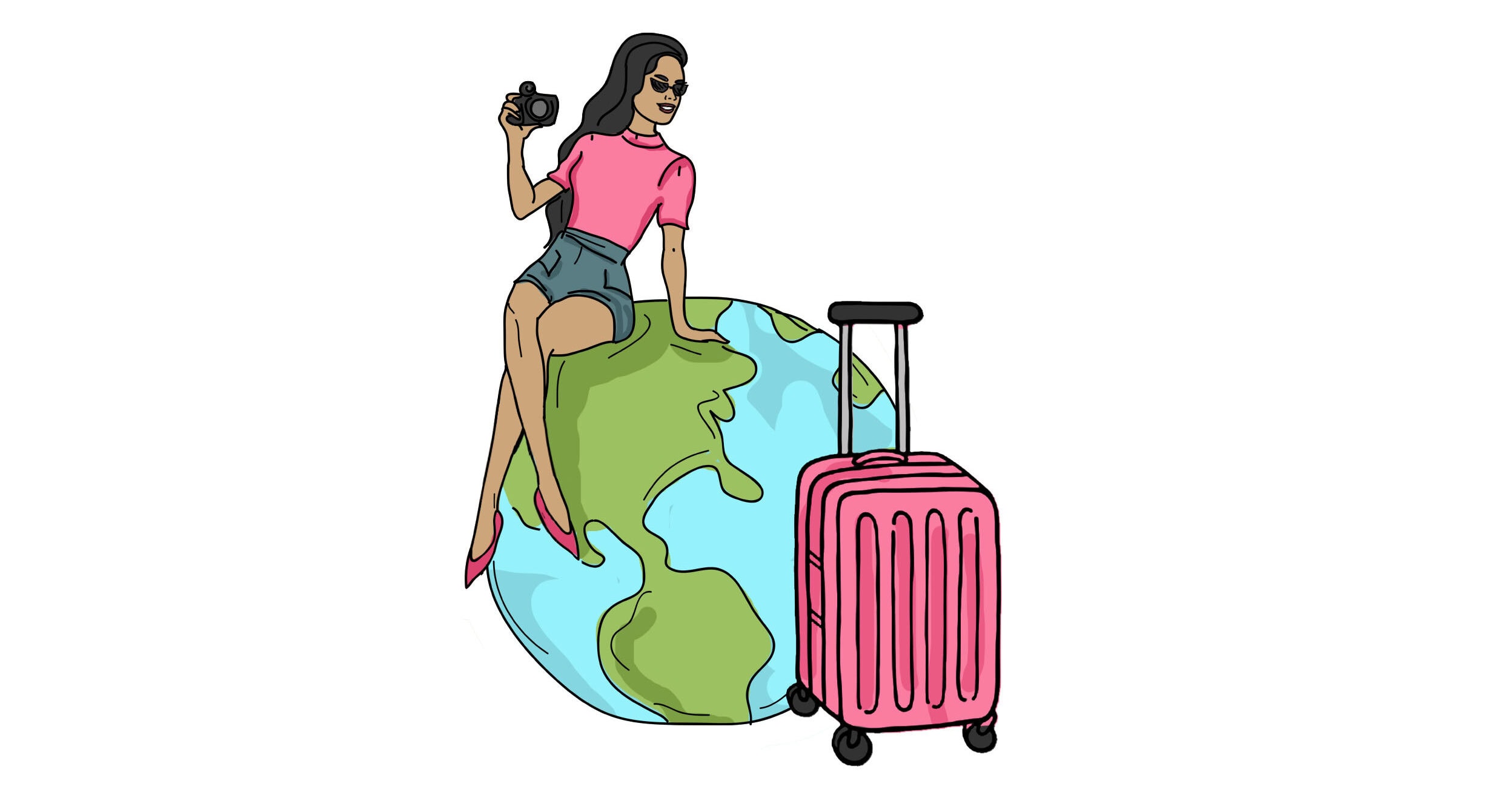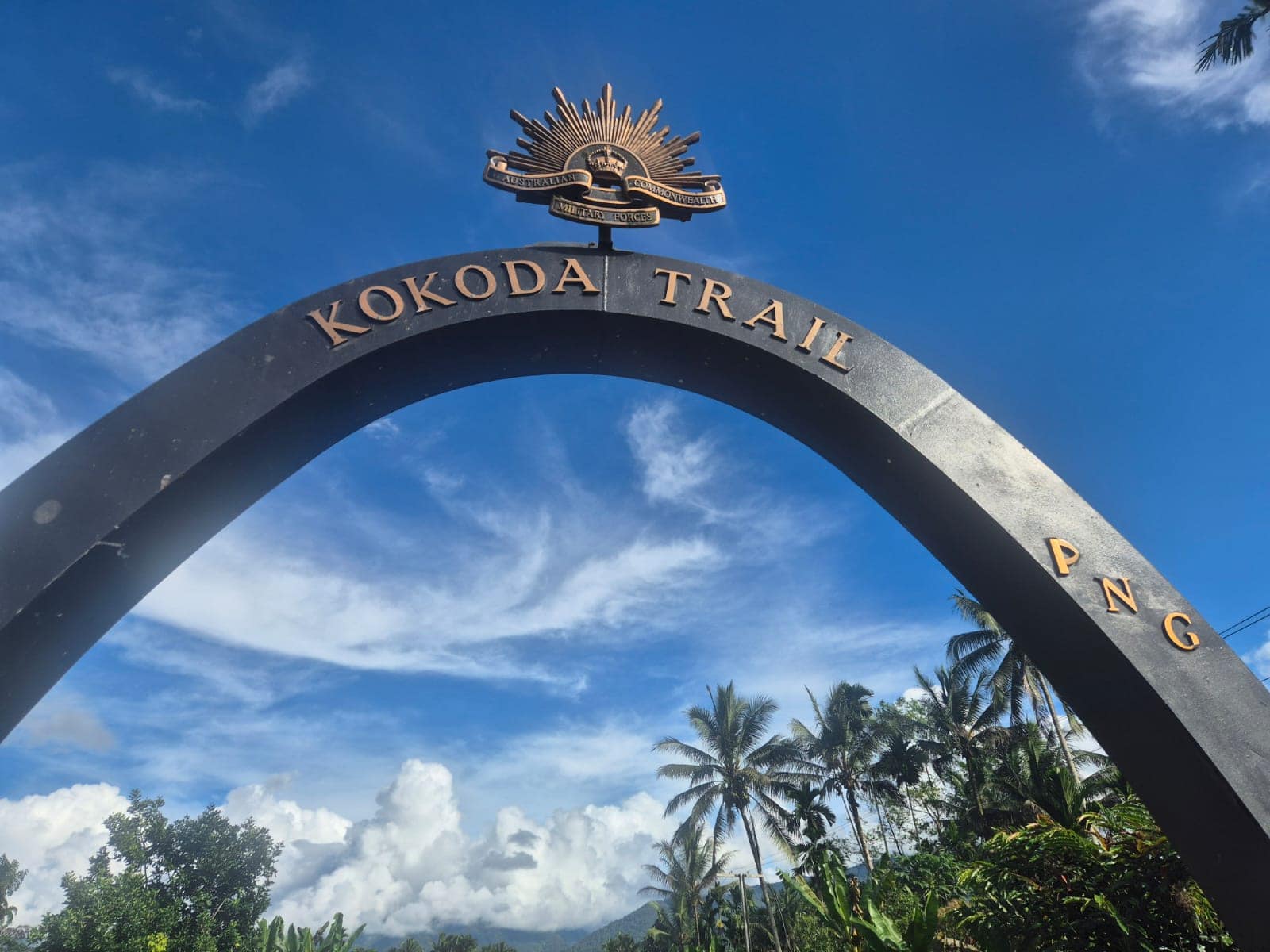
The Kokoda Trail. A name that stirs the soul of many Australians and historians. It’s a place of history, challenge, and personal growth.
I am a solo female traveller who usually writes about 4×4 adventures. I never imagined I’d find myself in the heart of Papua New Guinea’s jungle. But here I am, fresh from the experience and ready to share what it’s really like to trek the Kokoda Trail.
Why I Did It


I’ve always loved history—stories of grit, survival, and the human spirit have always drawn me in. The Kokoda Trail had always lingered in the back of my mind—a quiet whisper of adventure and history. But to be honest, the Kokoda Trail was never something I had on my bucket list.
This post is for—the first-timers, the curious and the adventure-seekers. If you’re an Australian—or a Kiwi —drawn to your shared heritage, or just someone chasing a challenge that pushes every limit, here’s what to know about walking the Kokoda Trail.
Where Is the Kokoda Trail and What the Map Looks Like?

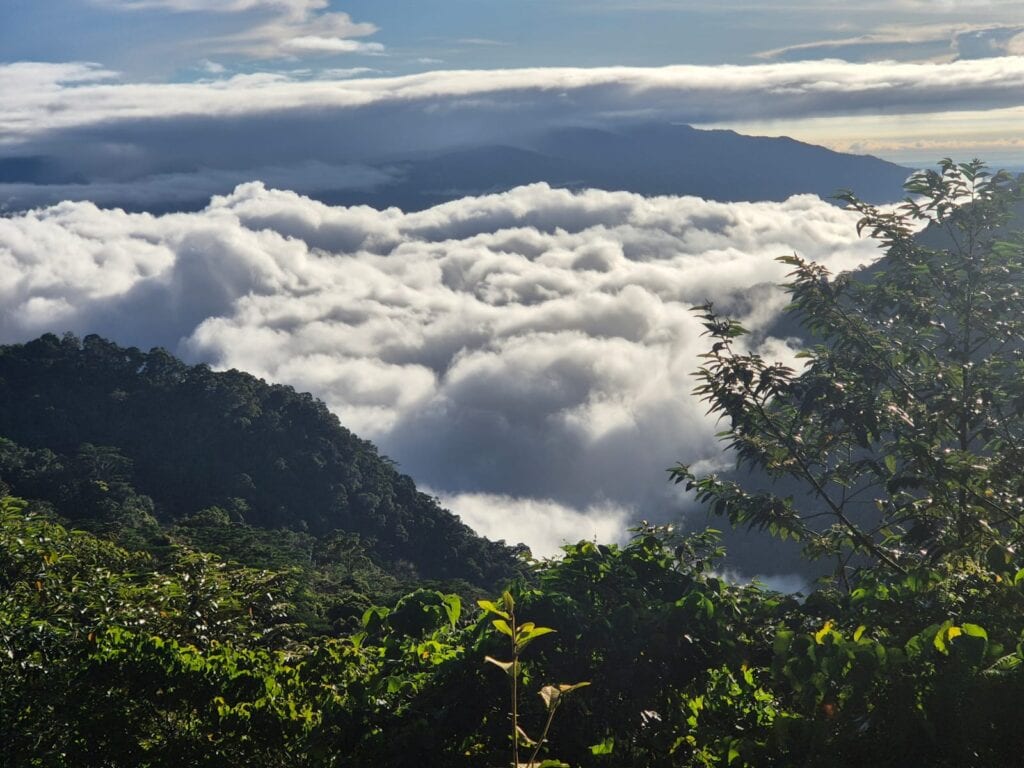

The Kokoda Trail stretches 96 kilometres through the Owen Stanley Range in Papua New Guinea. It starts (or ends) at Owers’ Corner, about 50 km east of Port Moresby, and finishes at the village of Kokoda.
The trail winds through dense jungle, across rivers, through swamps and mud, and up steep mountain ridges. The highest point is Mount Bellamy at 2,190 metres above sea level.
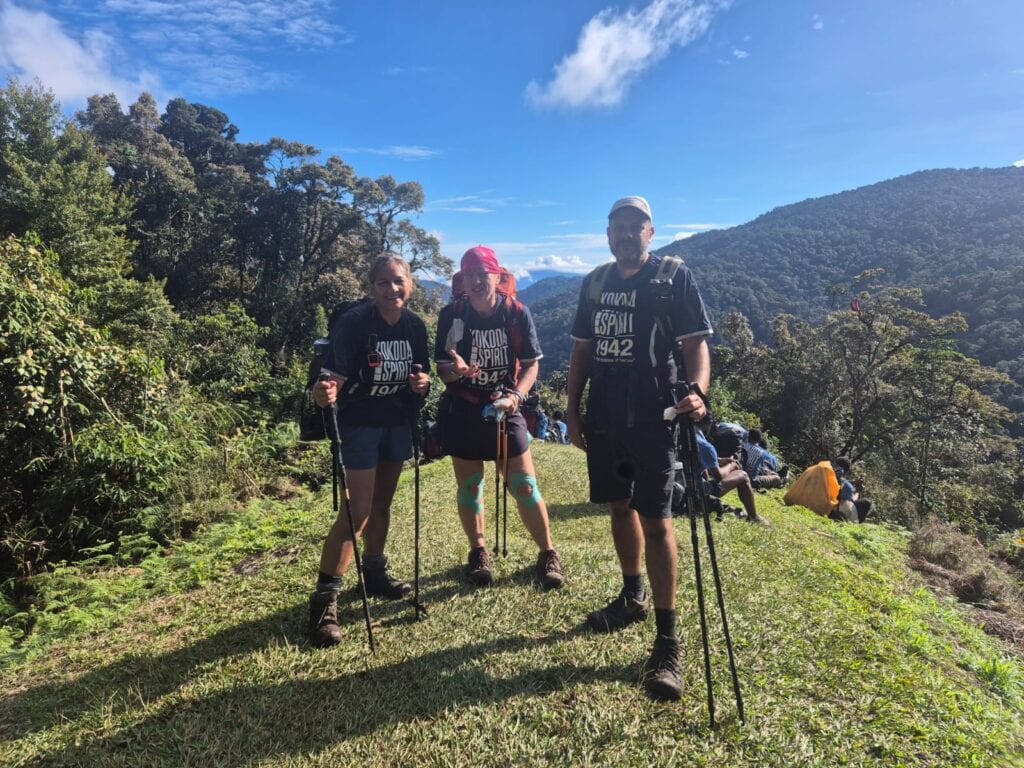
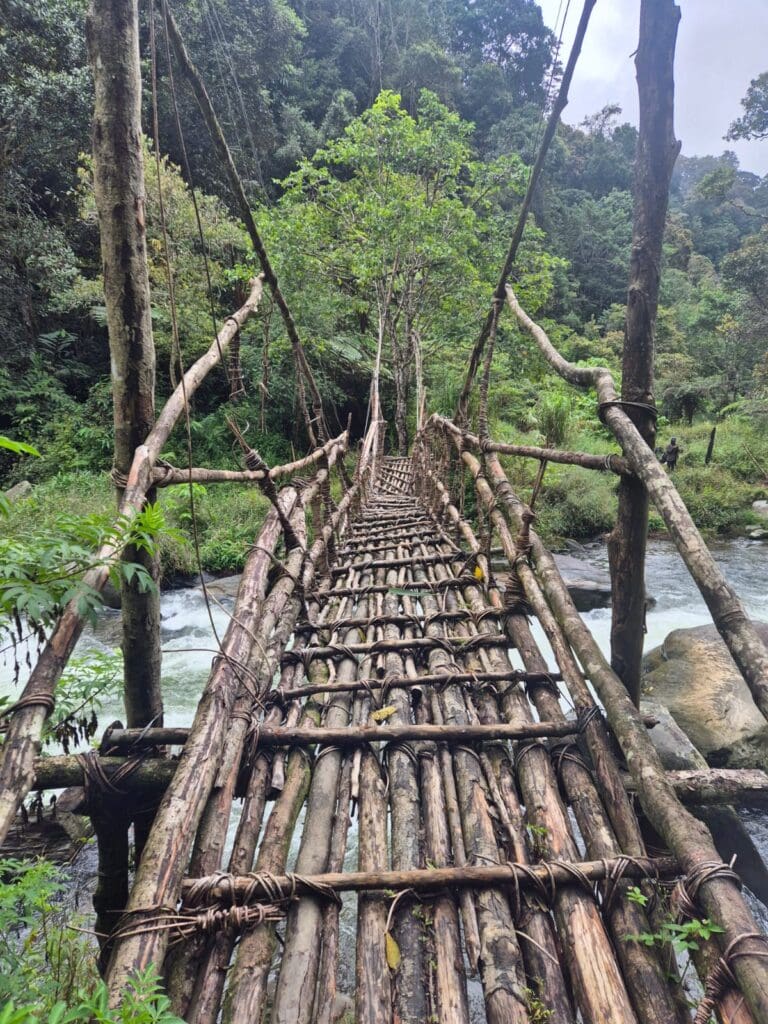
Looking at a map, you’ll see names like Isurava, Brigade Hill, Templeton’s Crossing—each tied to stories of courage and sacrifice during wartime.

How Long Is the Kokoda Trail and How Long Does It Take to Hike?
The trail covers approximately 140 km of actual walking distance—far more than the commonly cited 96 km. That shorter number reflects the distance ‘as the crow flies,’ but your feet will tell you otherwise. This isn’t a flat walking track—it’s a physically demanding jungle route.
Most people take 7 to 10 days to complete the trail, depending on fitness, weather, and the itinerary.
Our group took 9 days. It allowed enough time for historical reflection without rushing through.
When Is the Best Time to Walk the Kokoda Trail?
The Kokoda trekking season typically runs from late April through to the end of October, with the dry season being the safest and most comfortable time to go. The most popular months are June through August, when rainfall is lowest and trail conditions are more stable.
We trekked in May 2025, and while the weather wasn’t too bad—warm during the day and cooler under the jungle canopy—it was still wet and muddy underfoot. Nights were also quite cool, especially at higher elevations.
Later in the season, from June onwards, the trail tends to dry out more, but temperatures rise. It gets hotter. Each month has its pros and cons. So choosing when to go depends on your preference—milder temperatures with a wetter track, or hotter conditions with a drier one.
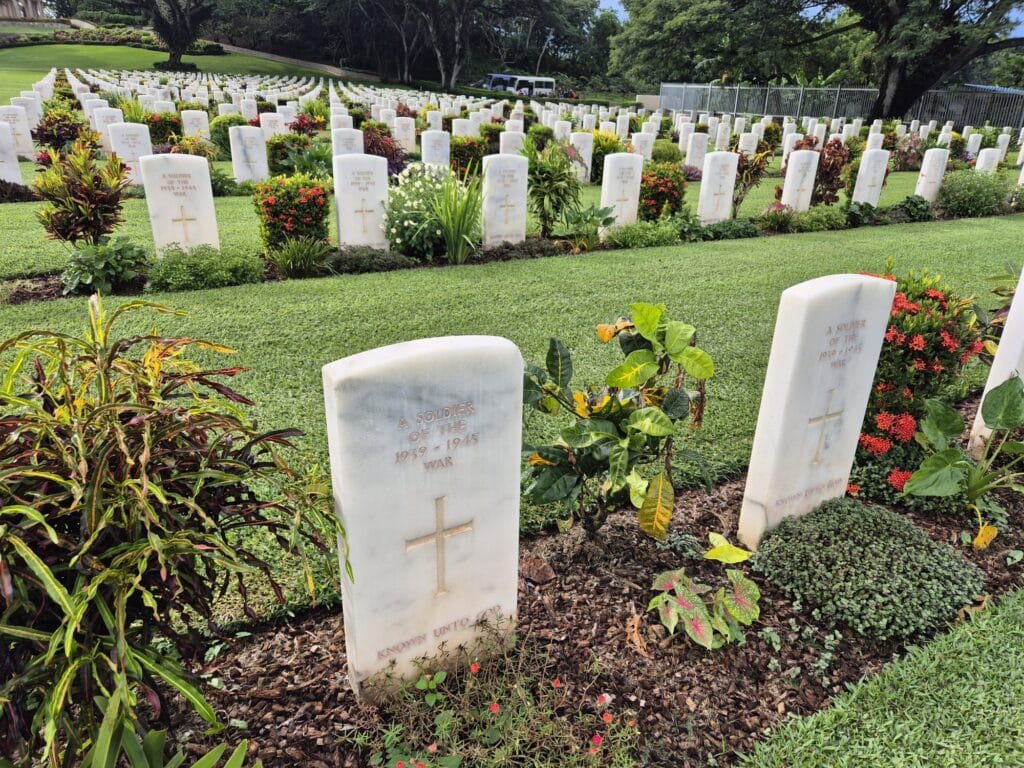
We trekked from Owers’ Corner to Kokoda, which meant starting with a bus ride from Port Moresby to Owers. Along the way, we stopped at Bomana War Cemetery to pay our respects to the fallen soldiers, and paused at McDonald’s Corner to chat with some locals.
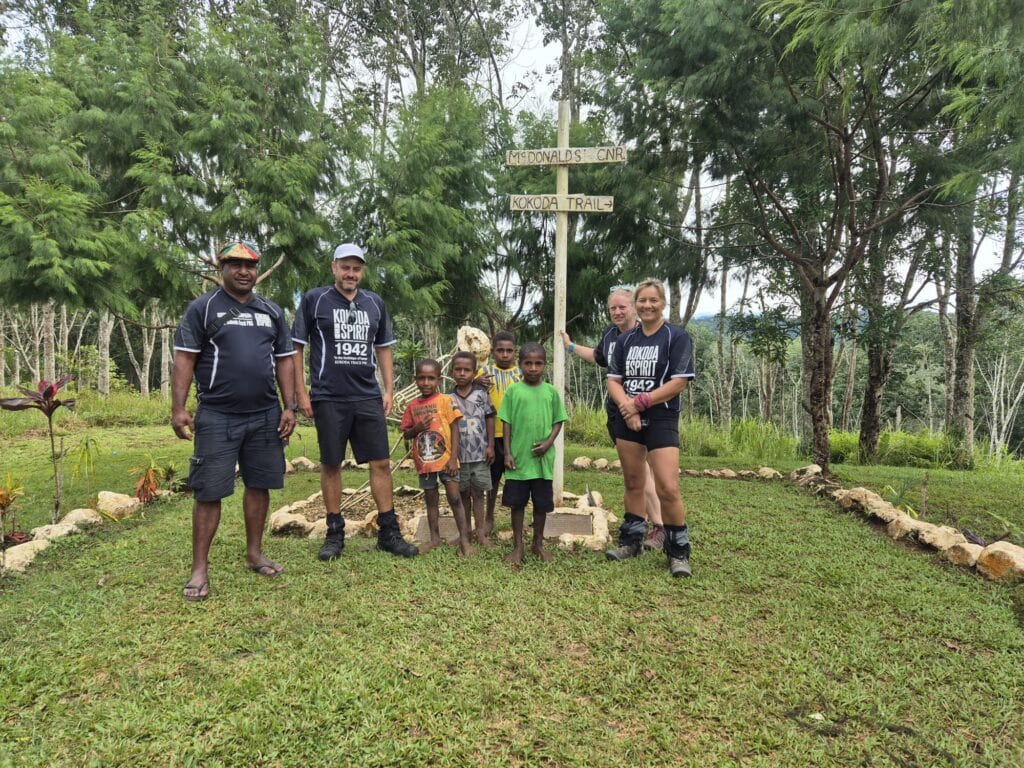
No matter which direction you walk, the total distance and elevation gain remain the same. You’ll still pass through the same remote villages, cross the same rivers, and summit the same ridgelines. That said, the Owers to Kokoda direction is known for steeper ascents but this is also the way the Diggers took on their way into battle. Kokoda to Owers involves longer descents and follows the diggers withdrawal. Some say descending is harder on the knees; others prefer to climb. Either way, it’s not easy.
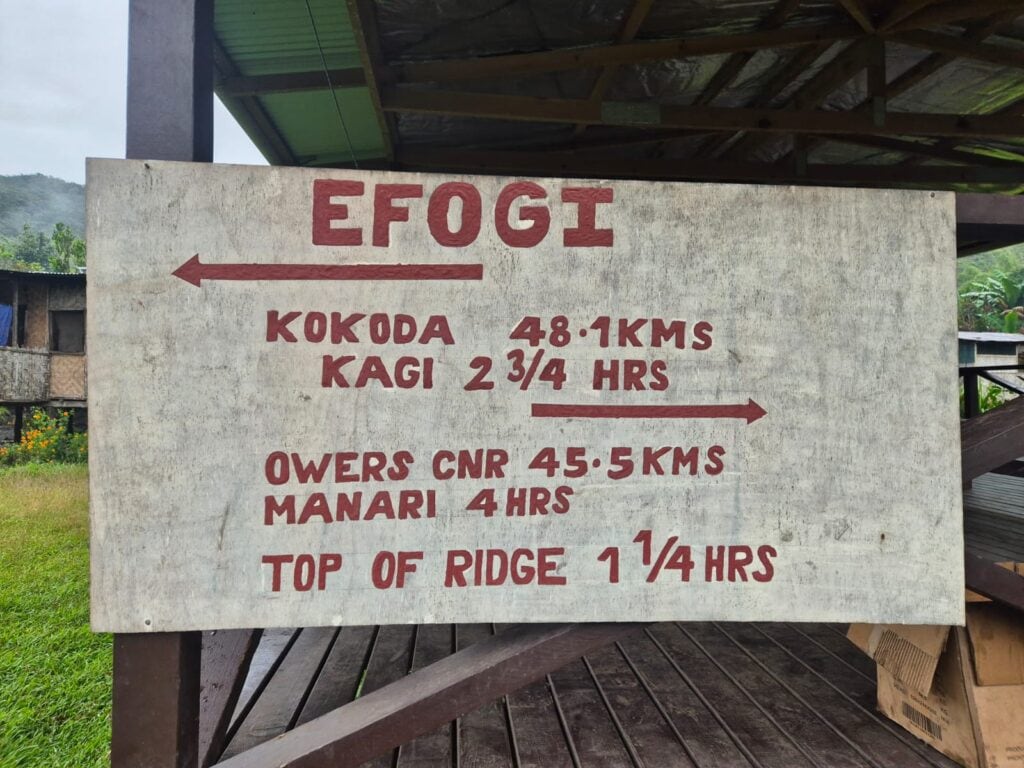
Ultimately, both directions offer the same profound experience. Whether you start in Kokoda (flying in from Port Moresby) or Owers, you’re in for the same challenge—and the same reward.
How Hard Is It to Hike the Kokoda Trail?
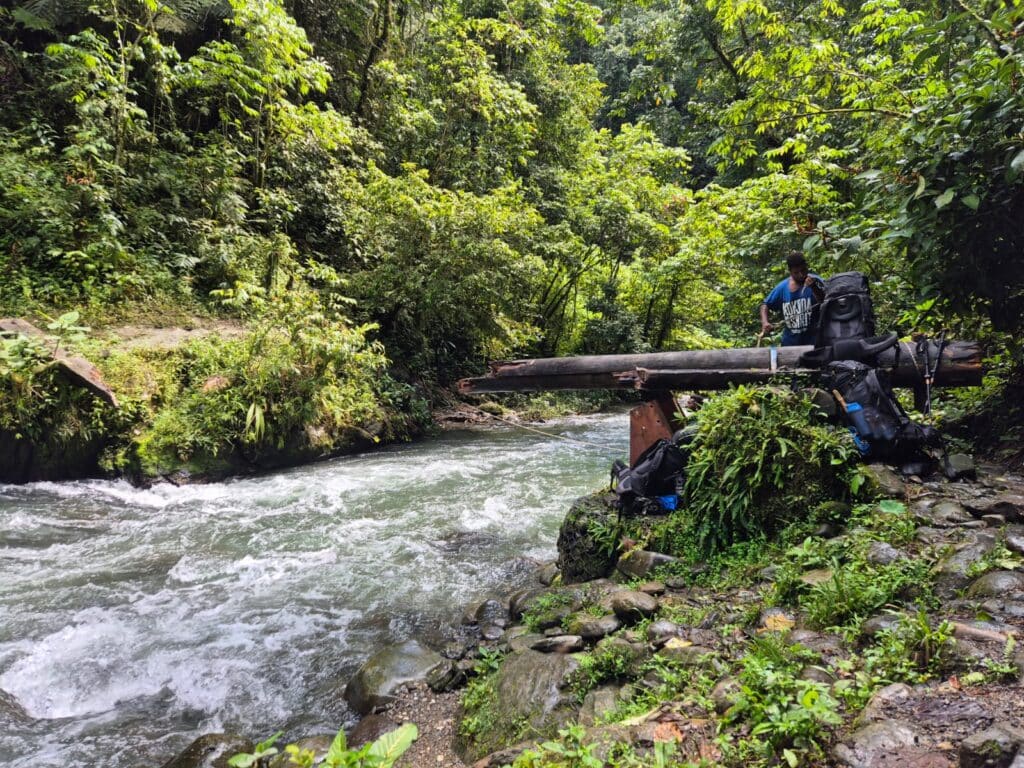
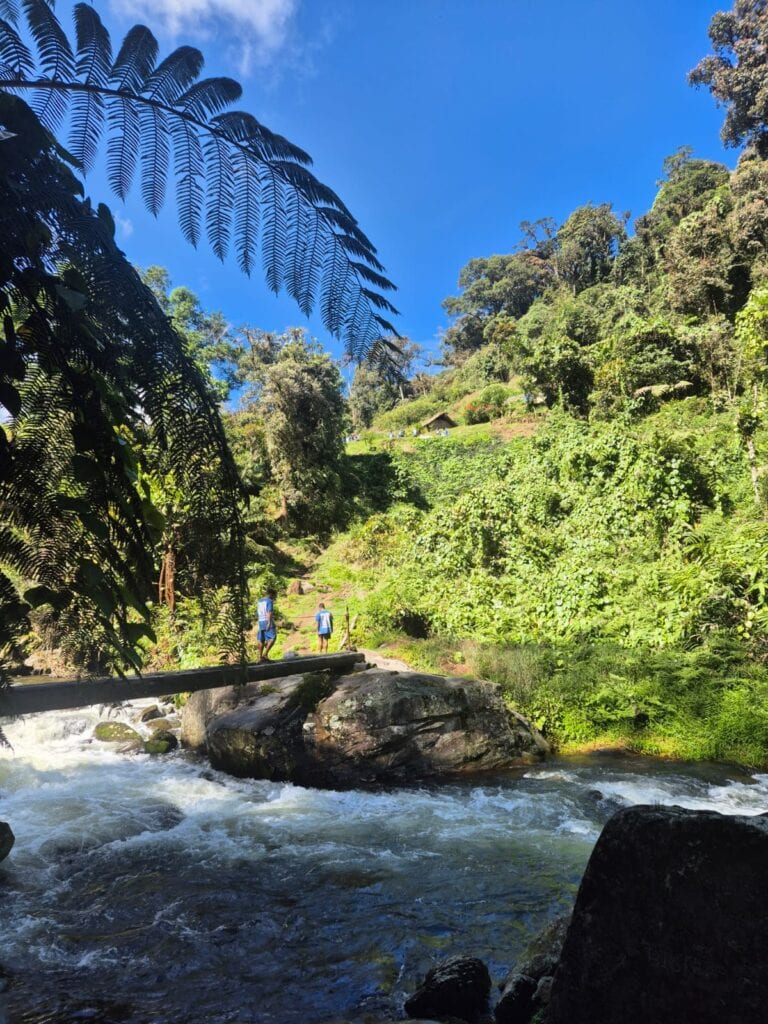
Short answer: very.
Steep ascents, slippery descents, high humidity, river crossings, and relentless mud. The heat can be intense, and while there’s a high potential for leeches on the trail, our crew was lucky enough to avoid them. But it’s not just physically demanding—it’s mentally demanding too.
There were moments I questioned why I was doing this. My demons came early in the first 2 days. My drinking water bladder burst, my walking poles wouldn’t screw in, and I seriously questioned my life choices. Thank goodness for my two trekking comrades.
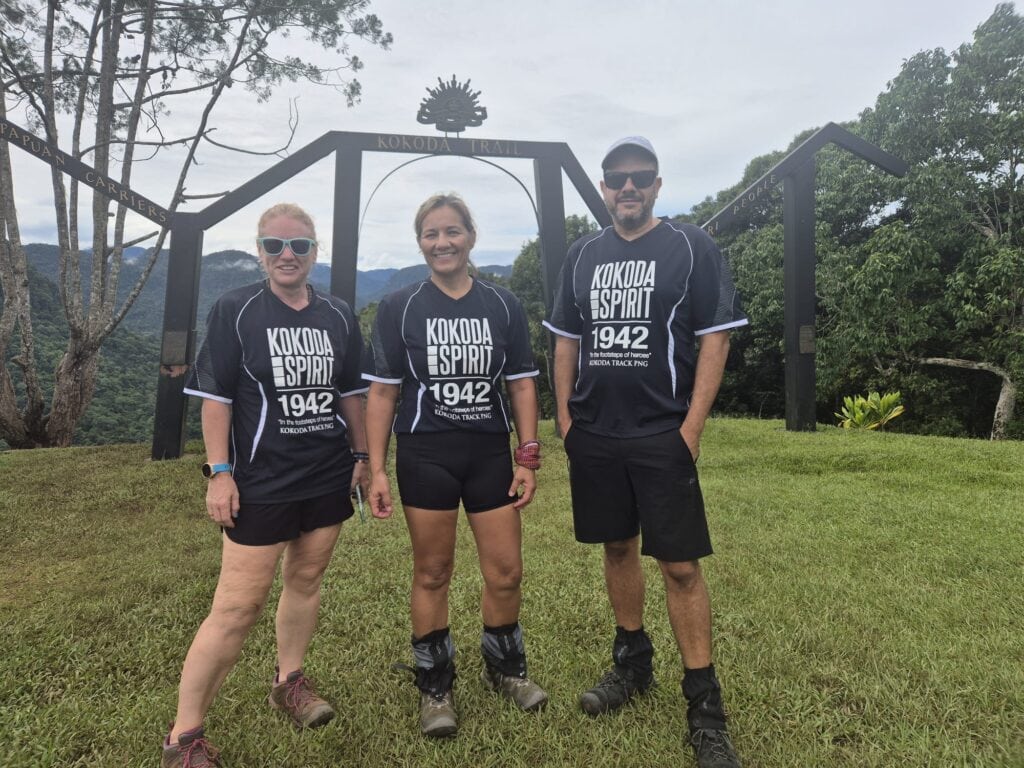
Blondie, with her caring-but-stern teenage-mum persona, calmly told me to shape up and take it one step at a time—her quiet mantra that got me through more than she probably realises. Claude, a true psychologist, didn’t say much—but when he did, his words were measured, motivating, and quietly powerful.
Their support helped me reset. I thank them both.

On day five, my foot slipped while descending a muddy section of the track. I didn’t fall—my porter was in front and my trek master grabbed my pack just in time. I came away with a pulled muscle that settled with ICE and rest. If this had happened on day one or two, I probably would’ve bailed. But by then, I was in the rhythm of the track with my eye firmly on the endgame – Kokoda.
The trail humbles you. And it lifts you, too.
What Does a Day on the Trail Look Like?
Start of the day
Wake up at 4:45 AM. The Chief Track Master tells you the plan the night before. Thanks to my menopause alarm clock, I was the natural wake-up call for the crew. There was also the occasional rogue rooster clearly incapable of telling the time and was crowing at 3:00 AM! This guy was extraordinarily difficult to sleep through.
Breakfast was around 5:30 am. Before eating, you pack up your gear and have a quick wash. While you’re eating, the porters pack down the tents. We were usually on the trail by 6:00 AM.
Morning tea and lunch is often at a historical site, where guides bring past battles to life. Throughout the day, we’d stop periodically for short rests.

From Owers Corner to Kokoda, there’s no shortage of climbs. Don’t overthink it—just keep moving, one step at a time, as Blondie would say. Her quiet mantra echoed through the jungle more than once, keeping me steady in moments when the trail felt endless.
This constant, relentless rhythm—known as the Kokoda Shuffle—kept our steps steady each day. My friend Paul, who hiked the trail in 2009, shared this with me before I left.
Reaching Camp
By 4:00–5:00 PM, we’d reach our next village—where we stayed each night. Most villages offered grassy clearings for tents, and because our group was small, we were sometimes able to set up inside huts. Generally you will camp outdoors under the stars.
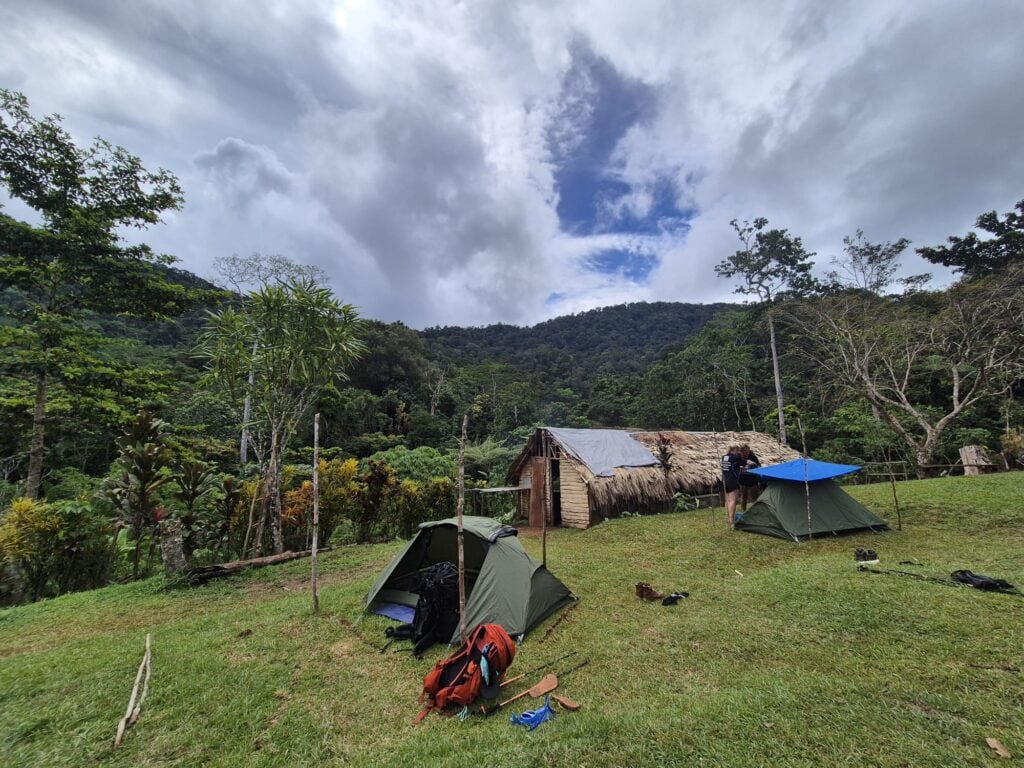

The porters got to work as soon as we arrived, setting up camp and cooking. We freshened up, ate dinner, and wound down with a chat before crawling into bed around 7:00–7:30 PM. Sleep came easily after such long days.
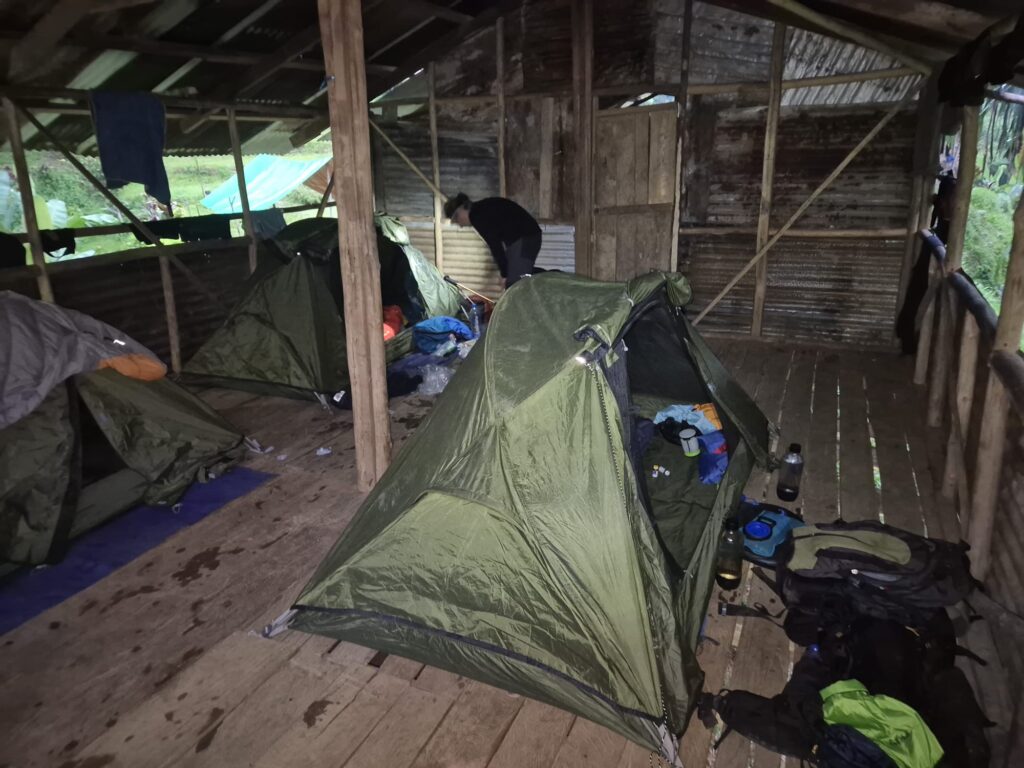
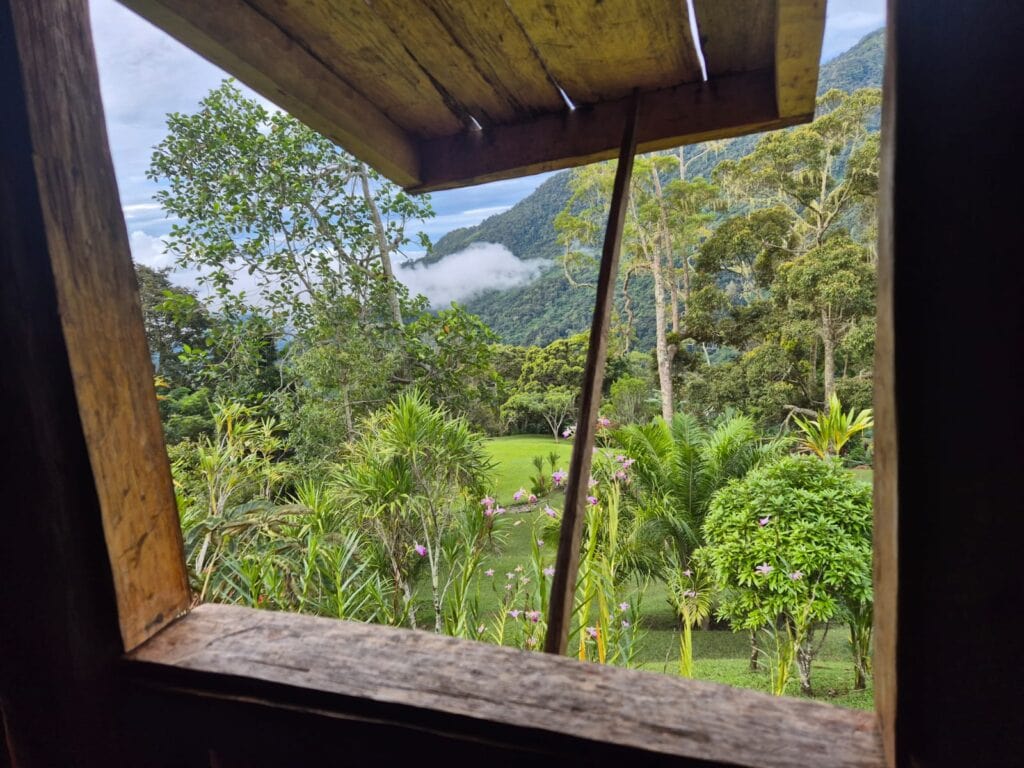
In most villages, you’ll find small stalls selling fruit, local produce, handmade bags, and fizzy drinks. While I’m not usually a soft drink person, a cold Coke or lemonade offered a great sugar hit and much-needed fluid replacement after a long day on the track.
It’s a good idea to carry some small cash—2, 5, and 10 kina notes are ideal. Expect to pay around 5 kina for a soft drink and 3 kina for a bunch of bananas.
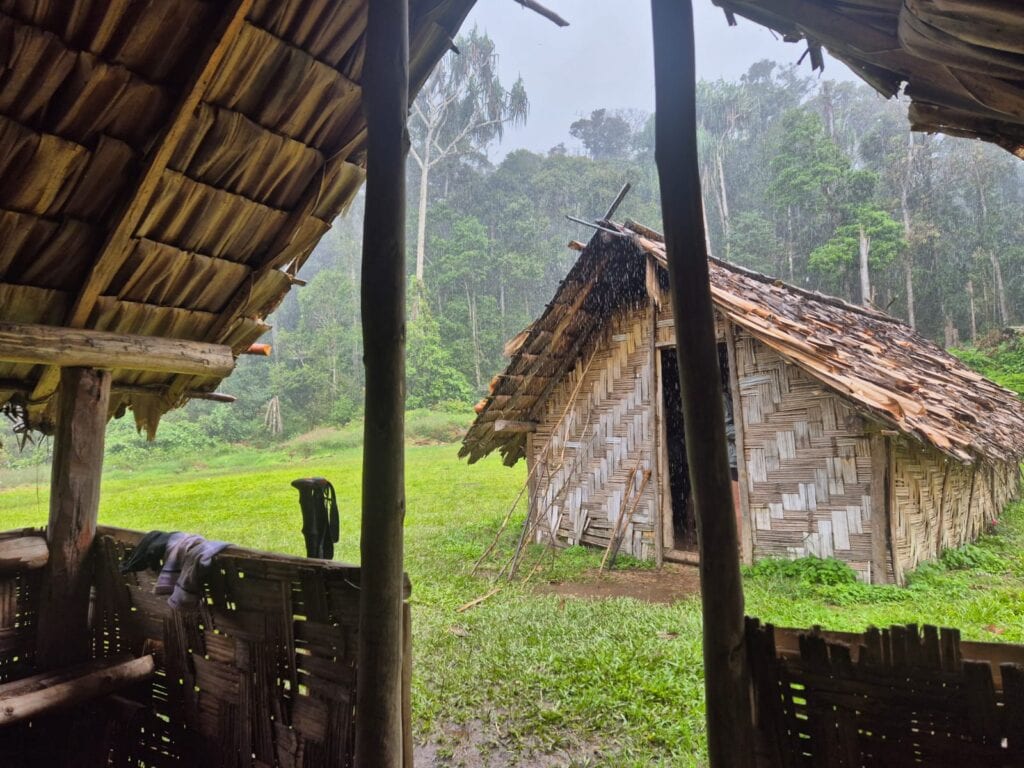
The porters would often sit with us, sharing stories. Some of the porters from other groups would sing songs, and many enjoyed teaching us Pidgin.
One phrase that made me smile was when Jabhep would say, “You, me go.” That simple line meant it was time to shoulder your packs and keep going. A gentle nudge that the journey continued.
What Do the Porters Really Do?

The porters are the quiet heroes of the Kokoda Trail. They’re not just there to carry gear—they’re your shadow throughout the entire trek. From pitching tents and sourcing clean water to keeping a close eye on your wellbeing, they’re constantly looking out for you.

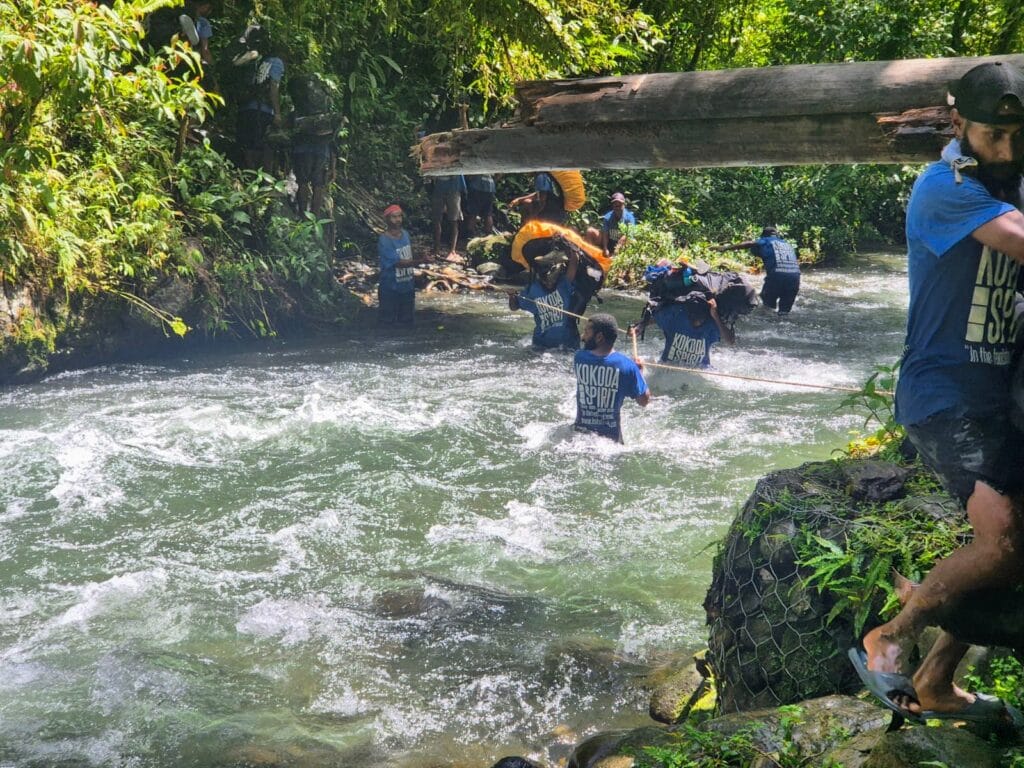
They know the trail like the back of their hand, often stepping in before you even know you need help. They offer encouragement, make sure you’re set up for the next day, share jokes, some sing songs, and carry your load—literally and emotionally.
My porter, worked extraordinarily hard for me. I’m no spring chicken so patience was required. He was always present in the more challenging parts of the trail. He supported me up steep inclines, guided me through thick mud, and steadied me on difficult crossings. I’ll always be grateful for the support I received. At the end of the day, he got me to the Kokoda Arches—mission accomplished.


The Porters thoughtfulness, strength, and humility were nothing short of inspiring.
I’ll be writing a full post soon all about what porters really do—because their role deserves to be recognised properly.
The Track Master
And then there’s the Chief Track Master. Ours was Nathan—the calm head leading the way. He read both the track and us perfectly. We never trekked in the dark. He could read the weather and knew every inch of the trail—no surprise, considering he’d completed it over 90 times!
Nathan had a quiet presence when entering a village. He greeted everyone warmly and was clearly respected. A true leader who walked with humility.
Each night, he’d sit with us, often around Blondie’s book and map, walking us through the next day’s plan.
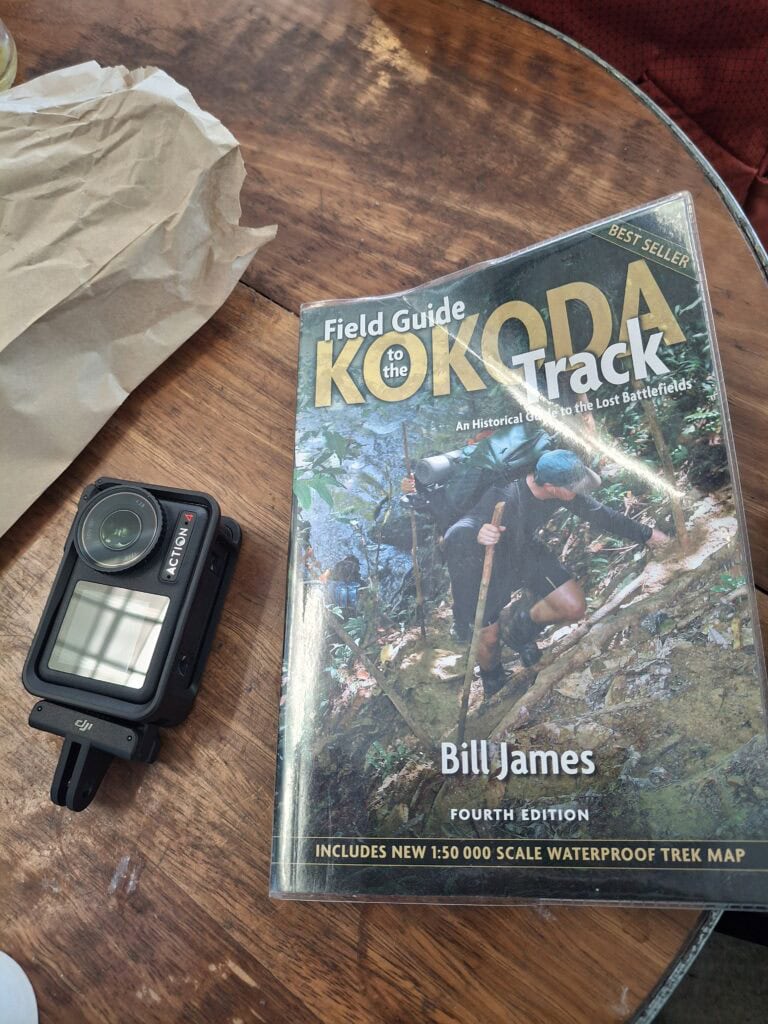
I found Nathan was consistently encouraging. I remember on day one, Nathan said, “Once you get into the rhythm of the track, you’ll be okay.” By day four, after the early head games and some challenging terrain, it clicked.
Why We Chose an Indigenous-Led Tour

If you’ve read my posts on the Gibb River Road—particularly my guide on Indigenous Accommodation. You’ll know I have a deep respect for Indigenous-led tourism. I make a conscious effort to support it wherever I can.
So when my friend Blondie and I finally decided to book our Kokoda trek last year, the easiest decision was choosing to go with an Indigenous-led operator. Blondie was of the same mindset.
Supporting a company that honours local culture, employs Indigenous guides, and invests back into communities felt aligned with how I like to travel—with purpose and respect. It added another layer of meaning to an already life-changing experience.
I’ll also be writing a more detailed post soon on choosing between Indigenous-led and Australian-operated Kokoda tours—stay tuned.
What Does It Cost to Do the Kokoda Trail?
Expect to pay between $4,000–$7,000 AUD in total.
- Tour operator fees: $3,500–$5,500 (includes food, porters, gear, logistics)
- Flights: $800–$1,200
- Travel insurance: $200–$400 (must cover trekking and evacuation)
- Gear: $500–$1,000
- Vaccinations & medical: $200–$400
- Porter tips: $100–$200
- Extras: $200–$300 (souvenirs, snacks, etc.)
Choosing the Best Kokoda Trail Tour
Look for: experience, safety record, porter welfare, itinerary pacing, and what’s included. Smaller groups are often better. Ask questions—this is not the place to cut corners.
We went with Kokoda Spirit but there are other options. They sent detailed preparation lists. They picked us up from the airport, arranged transport back from Kokoda, and booked a stay in a central 5-star hotel before and after the trek. It was very seamless.
With the Indigenous led tour we did not get the comprehensive war time history but we knew that when we paid. I have read Kokoda by Peter Fitzsimons and that is a comprehensive read. Blondies book was a more concise history which is great too.
In reflection the consolidation of the history of the track would have been great.
Kokoda Spirit also have Australian led tours.
Tips for First-Time Trekkers
- Start training 3–6 months in advance—focus on hill climbs with weight. If hills aren’t an option, stairs are a great substitute.
- Break in your boots well.
- Pack smart but light.
- Learn about the history before you go.
- Respect local culture. Learn a few words in pidgin before you go—I’m putting together a helpful guide to get you started.
- Trust your porters—they know every inch of the trail.
- Stay hydrated—including electrolytes, especially in the humidity.
- Bring thoughtful gifts for porters: wet weather pants, thermal clothes (it gets very cold in the highlands), socks, sleeping bags, and battery chargers are all greatly appreciated.
- I choose Covermore insurance. Kokoda Spirit wont let you go unless you have the correct insurance
- Organise and become familiar with your water filter system
Final Thoughts – Why It’s Worth It
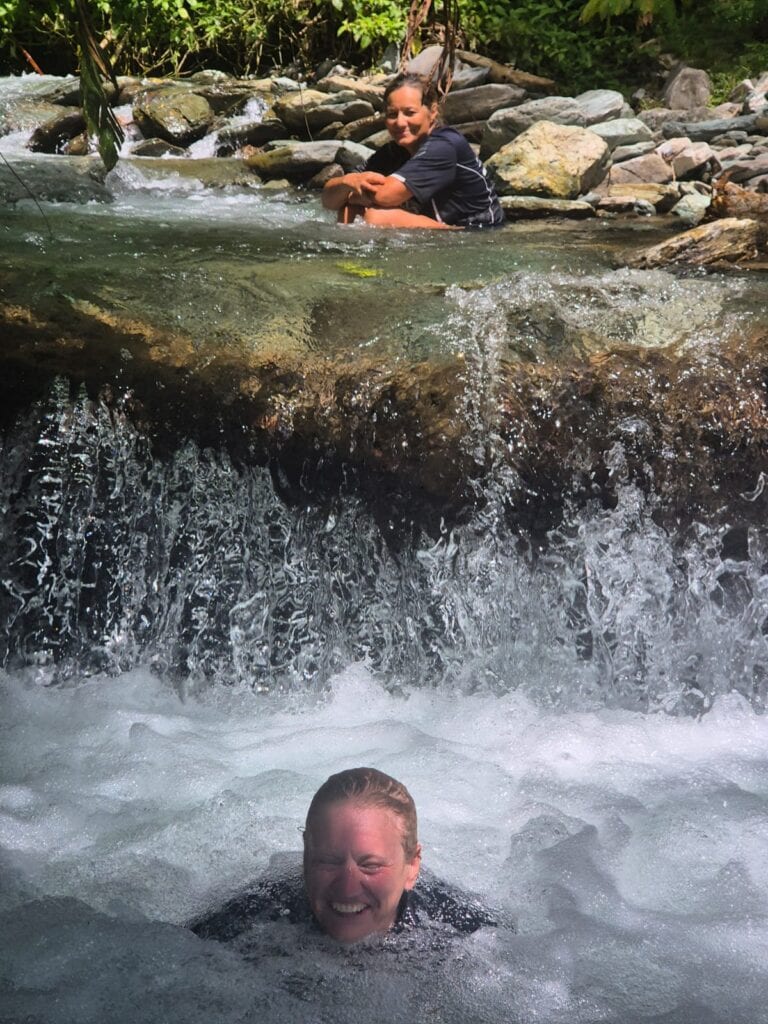
Before we reached Kokoda, we stopped at a nearby village where we swam and had lunch. A much-deserved time to relax and freshen up in the stream. I definitely smelled. But that’s part of the experience. Everyone’s in the same boat. You get used to it, and eventually, you don’t even notice.
Standing at the arches in Kokoda, I felt more alive than I had in years. The trail doesn’t just challenge you—it transforms you.

It connects you to the past and shows you what you’re capable of. If you’re even half-considering the Kokoda Trail—take this as your sign.
Start training. Pack your bag. And go.
The Kokoda Trail is waiting.

